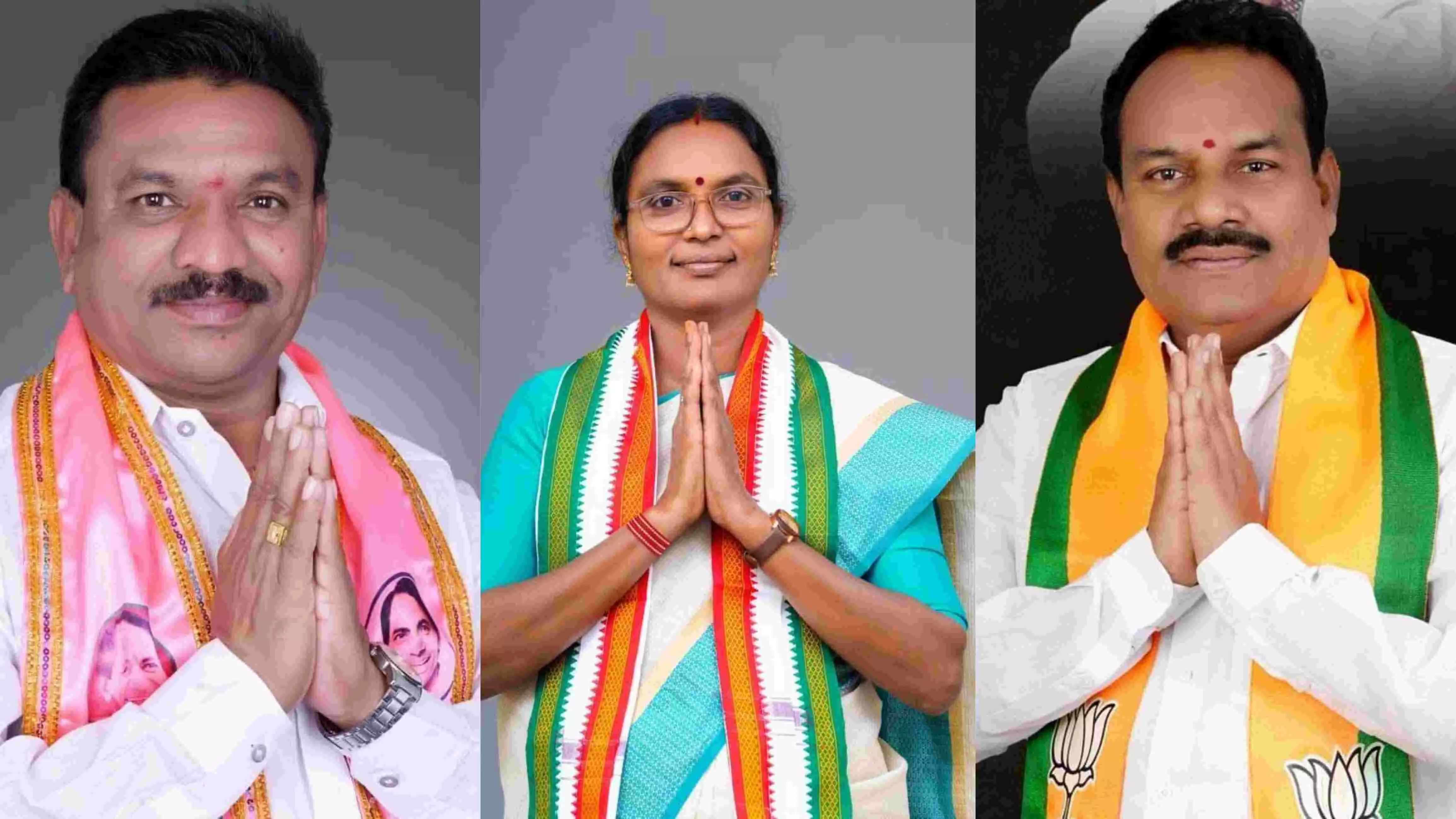Adilabad: In triangular contest, BRS fights for survival; Congress, BJP leave no stone unturned
The first general election in Adilabad seat in 1952, was won by C. Madhav Reddy on the Socialist Party ticket.
By S. Harpal Singh
Adilabad: There was a time when hardly anyone outside Adilabad knew about this parliamentary constituency. Political activity was remarkably low-key in the segment. At best, the place was dreaded for left-wing extremism and blood-curdling violence.
Of late, much has changed in terms of politics. The greatest change was the BJP winning this seat in the 2019 election. Now even star campaigners from frontline political parties including Prime Minister Narendra Modi and Chief Minister A. Revanth Reddy visit here for an election campaign.
Adilabad Parliament constituency, reserved for the Scheduled Tribes, is located at the north of Telangana. Spread over a picturesque undulating terrain in the districts of Adilabad, Nirmal, and Kumram Bheem Asifabad, the constituency encompasses seven Assembly segments including Sirpur, Asifabad (ST), Khanapur (ST), Adilabad, Boath (ST), Nirmal and Modhole.
At different times, this seat has been the stronghold of different parties like the Congress, the Telangana Rashtra Samithi (now Bharat Rashtra Samithi), and the BJP. It is represented by saffron party in the lower house of the Parliament.
The mood of BJP workers and leaders in the constituency is upbeat given the fact that party candidates had won the last elections from four of the seven Assembly segments, Sirpur, Adilabad, Nirmal, and Mudhole. The BRS candidates won from the Asifabad and Boath (ST) segments while the Congress won the Khanapur (ST) segment.
The first general election in Adilabad seat in 1952, was won by C. Madhav Reddy on the Socialist Party ticket. The Congress party candidates won consecutively in the six elections in 1957, 1962, 1976, 1971, 1977, and 1980 before the veteran Madhav Reddy stopped the party's winning streak in 1984, this time contesting on the Telugu Desam Party ticket.
Later elections until the 2014 general elections saw the seat being represented by candidates from the Congress, the TDP, and later the TRS parties. In 2019, the BJP won the Lok Sabha constituency for the first time.
The BJP bagged 35.48 percent of the total over 10,63,730 votes polled in that election. The difference in vote share of the first and second runners-up, the TRS, and Congress was negligible as the former had garnered 29.97 percent of the votes while the latter got 29.54 percent of the polled votes.
The number of electors in this election has grown by over 2.05 lakh. It is currently pegged at 16, 46, 830 (8,02,575 males and 8,42,054 females) as against the 14,89,490 in the 2019 elections.
All three parties are fielding former teachers as strong candidates and neither the parties nor the nominees are leaving any stone unturned in their bid to win the election. Though it looks like a triangular fight, the BRS seems to be the weakest of the lot given the turmoil in the party after its debacle in the 2023 Assembly elections.
Congress has fielded Athram Suguna, a teacher who is a vocal supporter of the Adivsi cause as seen during the Adivasi-Lambada conflict of 2017-2018. The BRS has nominated Athram Sakku, former MLA who was denied a ticket during the last assembly election.
The BJP candidate is veteran G. Nagesh. He represented Boath (ST) Assembly constituency in 1994, 1999, and 2009 as a TDP MLA. He won as MP in 2014 on a TRS nomination.
The candidates nominated by the three parties belong to the Gond tribe which is the largest in terms of population among the tribes. The Scheduled Tribe voters account for about 22 percent of the electorate according to independent estimates.
Data reveals that the constituency has over 15 percent of SC voters, while Muslim voters are estimated to be over 13 percent. As high as 70 percent of the electorate belongs to rural areas, while the remaining 30 percent of voters come from urban places.